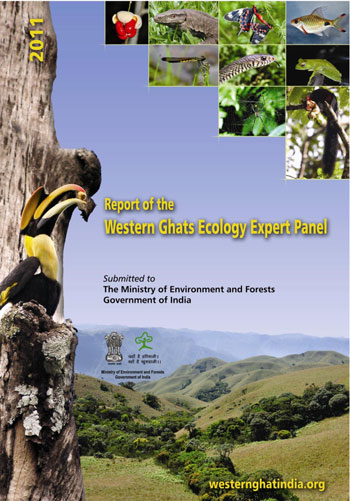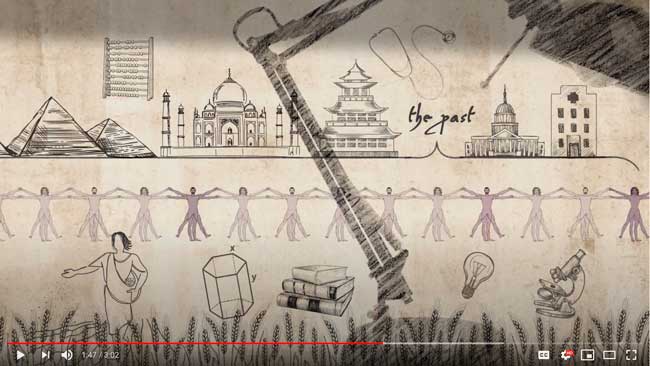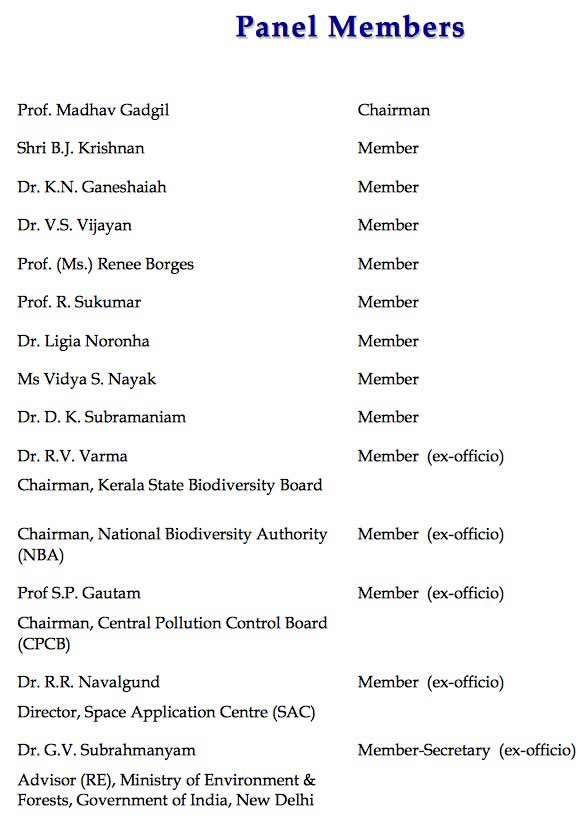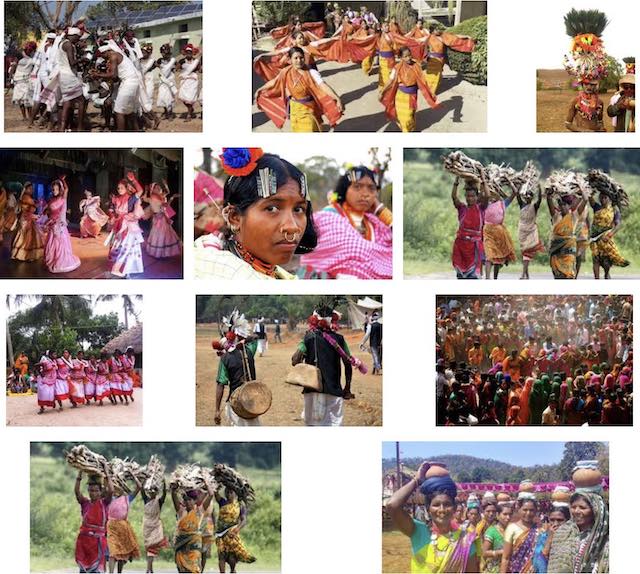
Celebrations and Convergence for
Conservation In Western Ghats (PDF, 3 MB) >>
Learn more
Western Ghats tribal heritage and ecology >>
CULTURAL TRADITIONS OF NATURE CONSERVATION IN INDIA
By Dr S.M. NairLiving in harmony with Nature has been an integral part of Indian culture. This has been abundantly reflected in a variety of traditional practices, religious beliefs, rituals, folklore, arts and crafts, and in the daily lives of the Indian people from time immemorial. The present day global concerns for sustainable development and conservation of natural resources spanning the two decades between the Stockholm Conference of Environment in 1992 and the United Nations Conference on Human Environment and Development (Earth Summit) at Rio de Janeiro in 1992 are of recent origin in comparison to the long tradition and cultural ethos of nature conservation in India.
Virtually all the countries of the world have rich traditions embedded in the ethics of protecting nature. Many ancient cultures tell us how communities lived in harmony with nature, with a tradition of reverence for the elements that constitute ecosytems, drawing their sustenance from natural resources and at the same time protecting the environment that sustains them. Modern man tends to look down upon indigenous people as primitive, backward and superstitious. They may be poor, illiterate, and disadvantaged in many other ways, but they have a tremendous understanding of ecosystems and the factors that sustain them.[…]
The worship of Mother Earth is a universal phenomenon in many indigenous cultures. There are innumerable examples of festivals, rituals, songs, and myths that celebrate the gifts of Mother Earth all over the world, revealing the intimate sense of togetherness and harmony that exists between man and nature in tribal societies. […]
One of the finest examples of traditional practices in India based on religious faith which has made a profound contribution to nature conservation has been the maintenance of certain patches of land or forests as “sacred groves” dedicated to a deity or a village God, protected, and worshipped. These are found all over India, and abundantly along the Western Ghats, the west coast, and in several parts of Kerala, Karnataka, Tamil Nadu amd Maharashtra. In Kerala there are hundreds of small jungles dedicated to snakes (Sarpakavu, Sarpa meaning snake, kavu meaning jungle). There are also Ayyappan kavus dedicated to Lord Ayyappa, the most famous of which, visited by millions of devotees every year, being the sacred hill of Sabarimala with an Ayyappan temple.
According to Madhav Gadgil (1985):
“Sacred groves ranged in extent from fifty hectares or more to a few hundred square metres. Where the network of sacred groves has remained intact till recent times, as in the South Kanara district of the west coast, one can see that they formed island of climax vegetation at densities of 2 to 3 per. sq. km, ranging in size from a small clump to a hectare or more, and originally covering perhaps 5 per cent of the land area. This must have been a very effective way of preserving tropical biological diversity, for we are still discovering new species of plants which have disappeared from everywhere else, in these sacred groves.”
In spite of the depletion of forests in many parts of India, some sacred groves still remain intact as oases in deserts, conserving rich biological diversity. The maintenance of sacred groves can thus he considered to be an outstanding example of a traditional practice that has contributed to forest conservation, albeit in a small measure. There are also examples of sacred ponds attached to temples in many parts of India. Some of these have been responsible for the protection of certain endangered species of turtles, crocodiles, and the rare fresh water sponge. […]
In a developing country attempting to achieve rapid economic growth, there are often tensions between the claims of environmental protection and those of development. That environmental conservation cannot be isolated from the general issues of development and must be viewed as an integral part of it, and an essential prerequisite for sustainable development, is being increasingly understood today. Conscious efforts are now being made to integrate environmental concerns into policies and programmes relating to economic development. It is at this juncture that we should look back upon our rich tradition of living in harmony with nature, which over the years have been overshadowed by the Western utilitarian approach to scientific and technological developments.
Madhav Gadgil and Romila Thapar (1990) focus our attention to our traditional relationship with nature when they say:
“India obviously needs a new strategy of resource use and a new common belief system to hold the society together and put this strategy into operation. The present strategy of resource-use intensification, leading to increasing levels of outflows from the countryside to the urban-industrial sector, which is heavily subsidized by the state, and from the country as a whole to the developed world, and the belief system centred on development and national prestige, which has replaced the unifying theme of a national struggle against the British, have proved inadequate. The new strategy has to be grounded in efficient, sustainable use of resources and supported by a belief system based on respect for the natural endowments ofthe country. There are welcome signs that such a strategy and such a belief system are beginning to emerge, although not enough has happened in tenus of concrete action. What does ultimately happen will depend critically on how far society recognizes the real power of those whose well-being is organically linked to the health of the resource base of the country the peasants, the tribal peoples and the nomads“.ABOUT THE AUTHOR
Dr S.M. Nair. former Director of the National Museum of Natural History, New Delhi, is an eminent museologist with an international reputation. He has a Masters degree in Zoology, and a Doctorate in Museology, and has served on the faculty of the departments of Museology at the M.S. University, Baroda, and the Birla Institute of Technology and Science, Pilani. He is the recipient of the Rockefeller III Fund Fellowship, the Homi Bhabha Fellowship, and the Smithsonian Institution Fellowship in the field of Museology. His major area of specialization and expertise is in the organization of natural history museums, environmental education, and the spread of conservation awareness. He has been Vice-Chairman of the International Committee of Natural History Museums, International Council of Museums, and edited the journal. “Studies in Museology”. Widely travelled both in India and abroad, he is the architect of the first National Museum of Natural History in India and the guiding force behind its exhibit programmes, educational activities, and popular publications.
Source: Untitled Document
Address: http://ccrtindia.gov.in/readingroom/nscd/ch/ch11.php
Date Visited: Fri Sep 16 2016 09:47:40 GMT+0200 (CEST)
“The practice of religious rituals, ceremonies and sanctions by specific cultural groups allow such sacred landscapes to be maintained, emphasizing that humans are intrinsically part of the ecosystem. Taboos, codes and customs specific to activities and community members restrict access to most sacred groves. […] The inclusion of local people’s needs and interests in conservation planning is increasingly accepted as essential, both to promote the well-being of human populations, and to ensure that biodiversity and conservation needs are met in the long-term.” – Nazir A. Pala, Ajeet K. Neg and N.P. Todaria in “The Religious, Social and Cultural Significance of Forest Landscapes in Uttarakhand Himalaya, India” (International Journal of Conservation Science, Vol. 5, Issue 2, April-June 2014) | Sacred groves | Biodiversity and development – Himalaya >>

Watch “The Good Ancestor – The Legacies We Leave” (3 min.): An animation that explores the legacies we might leave for future generations >>
Links to some of the most important organisations, thinkers and doers that are leading the way and that have inspired the book The Good Ancestor by Roman Krznaric >>
Centre for Cultural Resources and Training (CCRT)
The Centre for Cultural Resources and Training (CCRT) is one of the premier institutions working in the field of linking education with culture. Established in 1979, pioneered by Smt. Kamaladevi Chattopadhyay and Dr. Kapila Vatsyayan, it functions as an autonomous organization under the aegis of Ministry of Culture, Government of India. At the philosophical core of the CCRT lies a commitment to holistic education, encompassing the cognitive, emotional and spiritual development of children. To this end the CCRT conducts education grounded in cultural knowledge and understanding as conducive to clarity, creativity, independence of thought, tolerance and compassion. […]
Source: Centre for Cultural Resources and Training (CCRT)
Address: http://ccrtindia.gov.in/aboutus.php
Date Visited: Fri Sep 16 2016 09:56:33 GMT+0200 (CEST)
A Passionate Life: Writings by and on Kamaladevi Chattopadhyay
Edited by Ellen Carol Dubois and Vinay Lal | Zubaan | Rs 995 | 483 pages
Gloria Steinem 07 April 2017 | Read the full review >>Despite the modern obsession with factories, mines and airlines in a newly independent India, [Kamaladevi Chattopadhyay] pointed out that for millions of villagers […] handicrafts were a source of income and pride. Not only did such skills provide a livelihood locally, but they could become a unique global export. After all, other countries had factories, mines and airlines. India had millions—especially, but not only, female millions—who were experts in handicrafts that went far beyond Gandhi’s spinning wheel. […]
Gloria Steinem is a leading feminist writer
Source: https://www.openthemagazine.com/article/books/kamaladevi-chattopadhyay-the-last-teacher
Accessed: 7 September 2020
Reading Room
CCRT’s mandate is to compile/ provide cultural resources to teachers, trainers, children, lay public etc. The section on Reading Room has made a beginning by randomly selecting articles on areas of India’s diverse culture.
Source: Reading Room
Address: http://ccrtindia.gov.in/readingroom/nscd/
Date Visited: Fri Sep 16 2016 09:58:02 GMT+0200 (CEST)
Report of the Western Ghats Ecology Expert Panel Part I
Preface
The report embodies among other things (i) categorization of the Western Ghats into three zones of varied ecological sensitivity, based upon careful analysis done by WGEEP, (ii) broad sectoral guidelines for each of these zones, and (iii) a broad framework for establishment of the Western Ghats Ecology Authority.
In this endeavor, the Panel has utilized the expertise of a number of people and organizations to whom the panel expresses its gratitude. The Panel thanks the Ministry of Environment and Forests, Government of India, for giving it this unique opportunity to be part of a very significant initiative directed at conserving the natural heritage of the Western Ghats – a global biodiversity hotspot.
Prof. Madhav Gadgil Chairman Western Ghats Ecology Expert Panel

Source: Report of the Western Ghats Ecology Expert Panel Part I
Address: http://www.thehindu.com/multimedia/archive/01092/wg-23052012_partI_1092699a.pdf
Date visited: 16 February 2020
The [flood] disaster in the Western Ghat region is a reminder that the area is very vulnerable, and utmost care must be taken to ensure that the delicate balance between nature and development is not disturbed. For example, reports from Kerala have said that excessive quarrying and wrongly constructed pits for monocultures resulted in landslides. There has been enough warning of such disasters. In 2011, the Western Ghats Ecology Expert Panel, also known the Madhav Gadgil Committee, had asked for a ban on mining and quarrying in the eco-sensitive zone. But the Gadgil report was criticised as biased against development, the government constituted another committee, the high-level working group or the Kasturirangan committee, which recommended a reduced zone of protection. […]
Kerala is a good role model to follow. Learning from last year’s floods, this year the government has set up camps that are well stocked with food, water, and medical facilities. For climate-sensitive governance, states must invest in climate-resilient infrastructure, build a cadre of skilled personnel at community levels, and also teach the people how to live sustainably and tackle climate-related climate emergencies.
Source: Editorial, Hindustani Times, 26 August 2019
URL: https://www.hindustantimes.com/editorials/the-unravelling-of-the-western-ghats-ecology/story-cTKzcTOb1wUrwfHQ37B0TK.html
Date visited: 16 February 2020
[Bold typeface added above for emphasis]
Up-to-date reports by Indian experts and journalists
Search tips
Combine the name of any particular state, language or region with that of any tribal (Adivasi) community.
Add keywords of special interest (music, poetry, dance just as health, sacred grove and biodiversity); learn about the rights of Scheduled Tribes such as the “Forest Rights Act” (FRA); and the United Nations “Declaration on the Rights of Indigenous Peoples”, “Universal Declaration of Human Rights”, “women’s rights”, or “children’s right to education”.
Ask a question that includes “tribal” or “Adivasi”, for instance: “Adivasi way of life better?” (or “tribal way of life worse?”)
Specify any particular issue or news item (biodiversity, bonded labour and human trafficking, climate change, ecology, economic development, ethnobotany, ethnomedicine, global warming, hunter-gatherers in a particular region or state, prevention of rural poverty, water access).
For official figures include “scheduled tribe ST” along with a union state or region: e.g. “Chhattisgarh ST community”, “Himalayan tribe”, “Scheduled tribe Tamil Nadu census”, “ST Kerala census”, “Particularly Vulnerable Tribal Group Jharkhand”, “PVTG Rajasthan”, “Adivasi ST Kerala”, “Adibasi ST West Bengal” etc.
In case the Google Custom Search window is not displayed here try the following: (1) toggle between “Reader” and regular viewing; (2) in your browser’s Security settings select “Enable JavaScript” | More tips >>
Note: hyperlinks and quotes are meant for fact-checking and information purposes only | Disclaimer >>
List of websites covered by this Google custom search engine
Academia.edu (platform for academics to share research papers) – www.academia.edu
Archive.org – https://archive.org
Centre for Science and Environment – https://www.cseindia.org
Current Conservation – https://www.currentconservation.org
Development and Cooperation (D+C) https://www.dandc.eu
Down To Earth (India) – www.downtoearth.org.in
India Environment Portal – www.indiaenvironmentportal.org.in
Harnessing Nature Magazine – https://harnessingnature.online
Mongabay-India – https://india.mongabay.com
M S Swaminathan Research Foundation – www.mssrf.org
Navdanya (protecting India’s biodiversity based food heritage) – https://navdanya.org
Third World Network (Penang, Malaysia) – https://twn.my
The Shola Trust (nature conservation in the Nilgiri region) – www.thesholatrust.org

Indian online periodicals and platforms | Images view >>
~ ~ ~
Personalize your CustomSearch by combining other search words >>
(e.g. name of a tribal community and region, a craft, or dance and puppetry)
Research the above issues with the help of Shodhganga: A reservoir of theses from universities all over India, made available under Open Access >>
Note: hyperlinks and quotes are meant for fact-checking and information purposes only | Disclaimer >>
Learn more
Atree.org | Ashoka Trust for Research in Ecology & the Environment (posts)
Biodiversity | Biodiversity hotspot | Hyderabad biodiversity pledge
Climate change | Audio | The Climate Question (BBC Podcast)
eBook | Background guide for education
Ecology and environment | Eco tourism | Tourism | Wildlife tourism
Environmental history and what makes for a civilization – Romila Thapar
Equations blog (Equitable Tourism Options)
Forest Rights Act (FRA) | Hunter-gatherers | Illegal mining | Legal rights over forest land
Information provided by Indian government agencies and other organizations (FAQ)
Nature and wildlife | Crocodile | Elephant | Tiger | Mangrove forest | Trees
PARI’s tales from tiger territory | People’s Archive of Rural India (PARI)
Shola Trust | Nilgiri Biosphere
Water and development – India’s tribal communities
Western Ghats – tribal heritage & ecology
What is the Forest Rights Act about?
Who is a forest dweller under this law, and who gets rights?